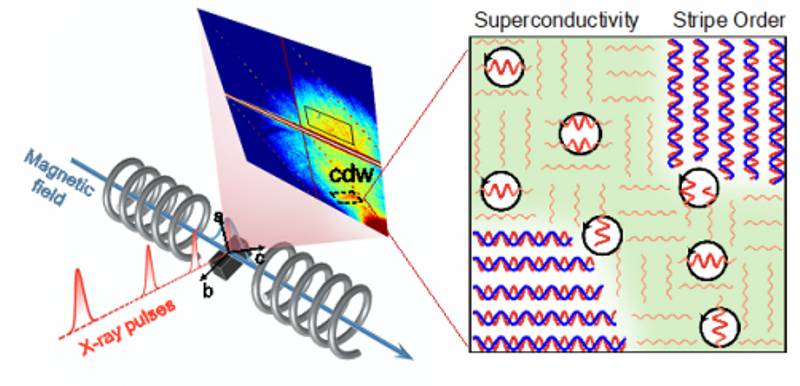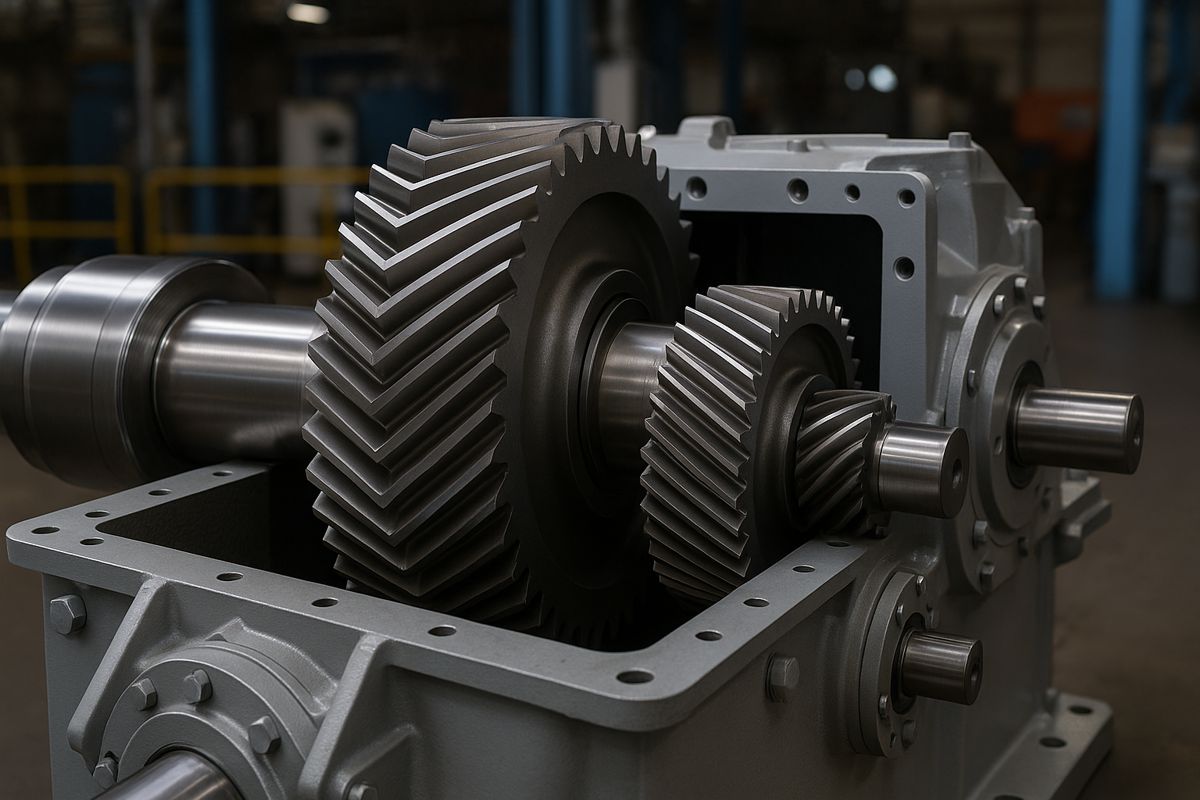Unified Theory and High Temperature Superconductivity
In copper-containing materials called cuprates, superconductivity competes with two properties called magnetic spin and electric charge density wave (CDW) order. These properties reveal different parts of the electrons in the superconductor.
Each electron possesses spin and charge. In a regular metal, the spins cancel each other out and electrical charges are uniform across a material. However, the strong electron-electron interactions in high-temperature superconductors such as cuprates give rise to other possible states. This research examined materials where strong magnetic interaction causes some of the electron spins to order along stripes. This occurs when spin density waves (SDW) and CDWs lock together to form a stable long-range “stripe state” where the peaks and valleys of the two waves are aligned.
This state reinforces the stability of the SDW and CDW. This stripe state competes with and interrupts the superconducting phase. Now, however, researchers have found that short-range CDW can be compatible with superconductivity in cuprate materials, rather than competitive. This finding runs counter to the scientific conventional wisdom.
The Impact
The research examined the roles of short-range CDW and the long-range stripes of CDW and SDW in superconductivity. It found a complicated answer. As expected, short-range CDW competes with long-range stripes to suppress superconductivity.
Unexpectedly, CDW also coexists with and is enhanced by short-range superconductivity. The research also identified the possibility that short-range charge order may enable the formation and motion of vortices in the superconducting phase. This means researchers may be able to stabilize superconductivity at higher temperatures and magnetic fields by controlling or enhancing short-range charge order.
The results also provide important insight into the development of a unified quantum description of superconductivity in the cuprates.

Researchers combined high magnetic fields with X-ray scattering to reveal the connection between superconducting vortices (black circles), charge density waves (red wiggles), and spin density waves (blue wiggles) in a cuprate superconductor.
Summary
Since the discovery of spin-charge stripe order in high temperature cuprate superconductors, researchers have not achieved an understanding of how the spin and charge density wave orders interact with superconductivity. Recently, researchers found that short-range CDW correlations are compatible with superconductivity in the cuprate superconductors, rather than necessarily competitive as is the conventional wisdom. The research was performed using X-ray measurements in a previously uncharted high magnetic field regime of the cuprate La1.885Sr0.115CuO4.
The CDW order consists of two components marked by distinct magnetic field and temperature dependencies. The sample spontaneously segregates into superconducting and alternatively spin-charge stripe ordered regions, clarifying how long-range spin order and bulk superconductivity coexist. More interestingly, the static vortex state observed at low fields can be made fluid—a vortex liquid state—in high fields ranging from 12 to 24 Tesla.
At these fields, the long-range superconducting phase is suppressed by field-induced mobile vortices. Surprisingly, a sudden enhancement to the CDW intensity is commensurate with the vortex melting field—a field much smaller than the upper critical field that quenches superconductivity. This research supports the phase-disordering scenario for the superconducting transition motivating a unified quantum description of density waves and superconductivity in cuprate superconductors.
Funding
This work is supported by the Department of Energy (DOE) Office of Science, Basic Energy Sciences, Materials Sciences and Engineering Division. X-ray FEL studies were conducted at the Linac Coherent Light Source, a Directorate of SLAC and a DOE Office of Science user facility. Soft X-ray characterization measurements were conducted at the Stanford Synchrotron Radiation Light Source at the SLAC National Accelerator Laboratory supported by the DOE Office of Science, Office of Basic Energy Sciences. Individual researchers received support from Grants-in-Aid for Scientific Research, International Collaboration Center-Institute for Materials Research, and MD-program, a National Research Foundation grant funded by the Korean government.
Part of this work was performed at the Stanford Nano Shared Facilities supported by the National Science Foundation.




















